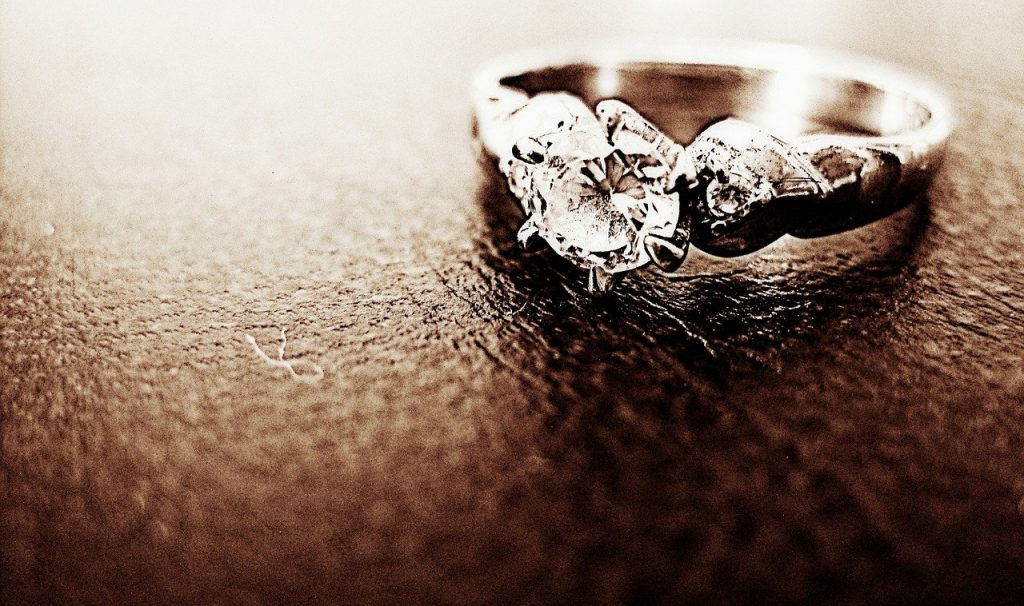Meaning and Use
The value of gemstones is dependent on four of the properties which they possess. These properties are referred to as the four Cs of gemstones and they include color, clarity, cut and carat. Carat is the easiest of the four Cs to determine. It is determined directly by weighing the gemstone. It is also the most important quality of gemstones. Carat is a unit of weight, it is used for measuring the weight of gemstones. It is commonly abbreviated as Ct or ct.
All other qualities (color, cut and clarity) being equal, the price of a gemstone will increase with increase in its carat weight. Also, the weight of a gem is not size dependent. Stones of the same carat weight may not be equal in visual size. The size of two diamonds of the same carat weight can vary depending on their cut.
Each carat is divided into 100 points, each representing one percent of a carat. For instance a stone of 2.05 carat can also be referred to as a stone of 205 points.
The largest diamond found in human history is the Cullinan Diamond. It was mined from South Africa in 1905. This diamond weighs 3,106.75 carats but was cut into 105 diamonds, 9 of which were left large and the others cut into smaller bits. The weightier the diamond the far more expensive it becomes. The price of diamonds increases exponentially as the weight increases. For instance, 1 carat diamond is far more expensive than two 1/2 carat diamonds. This is because it is much more common to find smaller diamonds in nature than larger diamonds; large diamonds are very rare compared to their smaller counterparts. One carat diamond costs about 5 to 6 times more than half carat diamonds.
Its relationship with other Cs of gemstones
While the carat weight may be the most important quality possessed by gemstones, other qualities may play major roles in boosting or undermining the value of a particular gemstone. For instance, two gemstones A and B of equal carat weight may not be equally priced due to presence of more inclusions in one of them. This is where clarity comes in play. Also, irrespective of the carat weight of the gem piece the color of the piece would affect the price. A highly saturated one carat sapphire would worth more than a lower saturated sapphire the same carat weight. As a general rule the purer the color of a gemstone the higher the price. Also, the more saturated it is the higher the price. Different cut gemstones of similar carat weight too may differ in price.
What it is not
Carat is not the same as Karat. Karat denotes the purity of gold while carat denoted the weight of the gold. 100% pure gold is 24 carat. Therefore, 20 karat gold is (16/24)*100 = 66.7% of gold while the remaining 33.3% are impurities or additives which may be other metals.
The official measure
Just like many other units of measurements such as the kilogram, liter, etc., carat was adopted in the General Conference on Weights and measures (GCWM) as a standard unit of measurement. In October 1907, during the fourth General Conference on Weights and measures, 1 carat was defined to be equal to 200mg or 0.0705 pounds. Prior to that time, varying measures were used in defining 1 carat of gemstone, most especially in countries where gemstones have been in use or discovered years before 1907. For instance, in Florence, 1 carat was defined as 197.2mg, in Eastern India 205.5mg while in South Africa it was 205.65mg and in Egypt it was defined as 195mg. These variations were initially used in measuring gold, but later in the 16th century it was introduced as a measure of diamonds.
where the word comes from
The word carat comes from a long line of words from different lingual origins. Carat is a French word which comes from the Italian word, carato which is the Arabic word qirat (kirat) which comes from the Greek keratin which means ‘fruit of the carob seed’.
Carob seeds in the past have been used in measuring jewelry, because it was believed that these seeds had little or no variations in weight. This was however untrue, as just like other seeds, carob seeds had slight variations in weight. In ancient times, these seeds were used for weighing small quantities. One carob seed is equivalent to one-twenty fourth (1/24) the golden solidus of Constantine.
To measure the weight of a gemstone using a carob seed, the person measuring would place the gemstone on one side of a scale and then carob seed to the other side of the scale, the number of carob seeds that balances the weight of the gemstone measured on the scale is the equivalent weight of the gem.
In 1871, the Syndical Chamber of Jewelers and other affiliate organizations in Paris proposed 205mg as the equivalent of 1 carat. This was later accepted, six years later by the Syndical Chamber of Diamond Merchants in Paris. Over time, most gemstone and gold affiliate associations across different countries proposed 200mg which was later adopted by the International Bureau of Weights and Measures in their fourth international General Conference on Weights and measures. In later years, this adoption was accepted by many countries. For instance, in France, abiding by the standard was made compulsory by law. This system was adopted by the US in the year 1913 and the United Kingdom in the year 1914.
Apart from carob seed, rice grains were used in some parts of the world to get the weight of diamonds. This is the origin of the word ‘grainer’ in gemology. A four grainer diamond is equivalent to one carat of diamond.
In modern times, technology has been engaged in measuring gems accurately in carat. Devices such as the mechanical balances, electrical scale and digital gem scales have been employed for measuring the weight of gemstones.

